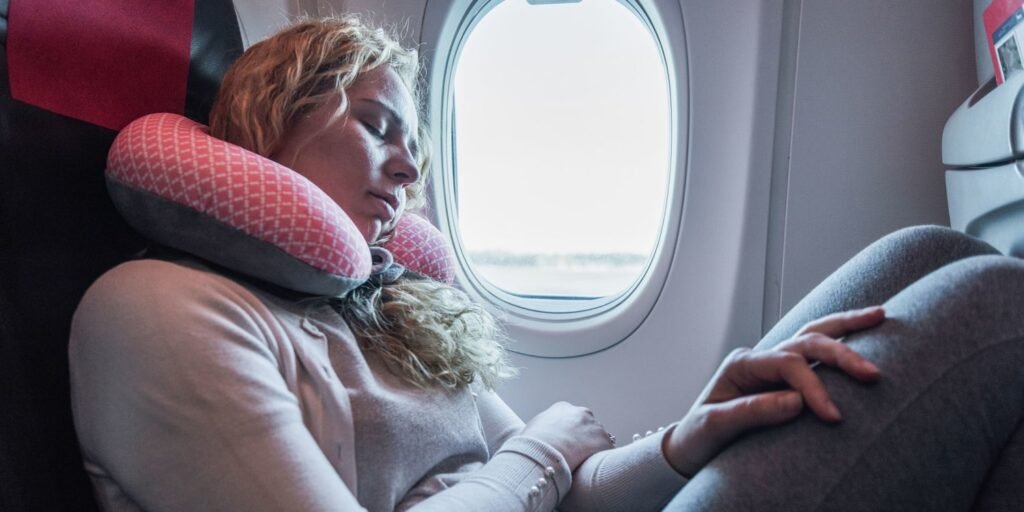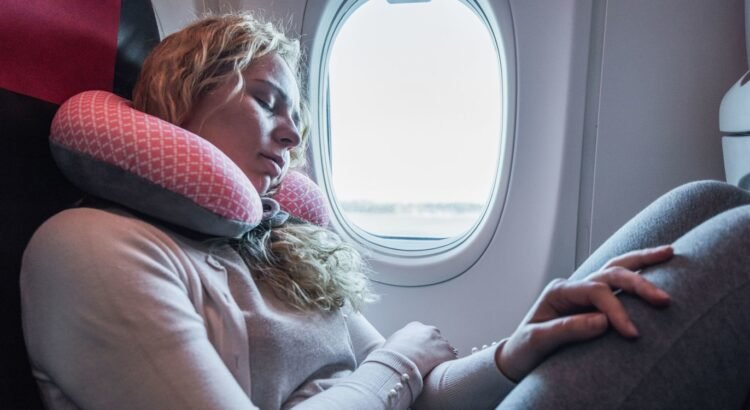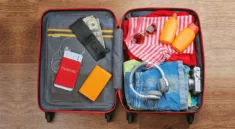
Travel can be thrilling, enriching, and utterly transformative. But one of the biggest challenges faced by even the most seasoned travelers is sleep—or the lack of it. Whether you’re soaring through time zones at 35,000 feet, rattling through the countryside on an overnight train, or trying to find rest in a noisy, unfamiliar hotel room, quality sleep often feels like a luxury.
Poor sleep while traveling can leave you groggy, irritable, and less able to enjoy your destination. It can weaken your immune system, disrupt digestion, and magnify jet lag. But don’t worry—restful sleep on the road is possible. All it takes is the right combination of preparation, awareness, and smart sleep strategies.
In this comprehensive guide, we’ll explore how to sleep better in all types of travel environments, from airplanes to hostels, by understanding sleep disruptors and learning how to manage them.
1. Why Sleep Is So Hard While Traveling
Sleep disruptions during travel are extremely common—and for good reason. You’re dealing with:
- Time zone shifts (jet lag)
- Uncomfortable or cramped environments
- Noise and unfamiliar sounds
- Uncontrolled lighting
- Anxiety or excitement
- Dietary or caffeine changes
- Different bedding or mattress quality
Each of these elements can throw your circadian rhythm off balance and make falling or staying asleep a challenge.
2. Understanding the Science of Sleep and Travel
To solve the problem, it helps to understand what governs sleep. Your body’s circadian rhythm is your internal clock, which regulates sleep-wake cycles based on light exposure, routine, and hormonal signals (primarily melatonin). When this rhythm is disrupted—say, from jet lag or exposure to bright lights during travel—your body gets confused about when to feel sleepy or alert.
By aligning your habits with your internal clock and adjusting gradually to new environments, you can optimize your chances for restful sleep.
3. Pre-Trip Preparation: Setting Yourself Up for Sleep Success
Sleep starts before you leave home. Preparing your body and sleep cycle in advance can ease the transition.
a. Gradually Shift Your Sleep Schedule
- If traveling across time zones, begin adjusting your bedtime and wake time by 15–30 minutes a few days before departure.
- For eastward travel, sleep earlier; for westward travel, stay up later.
b. Choose Flights Strategically
- Book overnight flights if heading east (so you can try to sleep during the flight).
- Try to arrive at your destination in the evening so you can sleep soon after landing.
c. Pack Your Sleep Essentials
A dedicated sleep kit can make all the difference. Include:
- Neck pillow
- Eye mask
- Earplugs or noise-canceling headphones
- Travel blanket or scarf
- Sleep socks or compression socks
- Melatonin or herbal sleep aids (if appropriate)
4. Sleeping on Planes: The Art of In-Flight Rest
Airplane cabins are notorious sleep killers. Between dry air, cramped seats, engine noise, and cabin lights, finding comfort is a challenge.
a. Choose the Right Seat
- Book a window seat for more control over light and fewer disruptions.
- Avoid seats near the lavatory or galley (noisy and high traffic).
- Exit row seats offer legroom, but often don’t recline—check before selecting.
b. Dress for Comfort
- Wear layers you can adjust for temperature changes.
- Choose loose-fitting clothing and avoid tight waistbands.
c. Mind Your Meals and Drinks
- Avoid caffeine and alcohol within 6 hours of sleeping.
- Eat a light, carb-rich meal before flying to promote sleepiness.
d. Create a Sleep Routine
- Use an eye mask and earplugs to simulate nighttime.
- Practice a pre-sleep ritual—reading, meditating, or listening to calming music.
- Use melatonin (0.5–3 mg) 30–60 minutes before sleep if adjusting time zones.
5. Sleeping on Trains: Rhythm and Rest
Trains may offer more legroom and freedom to move, but they also come with unique sleep challenges like movement, station stops, and noise.
a. Book Wisely
- Choose overnight trains with sleeper cars, if available.
- Pick a lower berth (less movement, more privacy).
- Carry your own sheet or sleep sack for hygiene.
b. Pack for Noise and Light
- Use a sleep mask and noise-canceling earbuds.
- Travel with a small white noise machine or app to mask station announcements.
c. Lock Up Your Belongings
- Sleep more soundly knowing your luggage is secure—use cable locks or loop straps around your wrist.
6. Hotel Sleep: Adapting to Foreign Beds and Sounds
Hotels—especially in busy cities—may offer comfort, but the new setting, strange noises, and even smells can make it hard to settle in.
a. Check the Room Carefully
- Request a quiet room away from elevators or street-facing windows.
- Choose higher floors to avoid noise.
- Check curtains for blackout quality and adjust the thermostat early.
b. Use White Noise or Sleep Apps
- A travel-size sound machine or a white noise app on your phone can drown out hallway noise or city sounds.
c. Bring Familiar Scents
- A small essential oil (lavender or chamomile) or your own pillowcase can add a sense of familiarity and comfort.
d. Control the Light
- Pack travel blackout curtains or use towels to block light from windows or under doors.
- Use an eye mask to maintain darkness if light leaks can’t be controlled.
7. Jet Lag Strategies for Better Sleep
Jet lag is one of the biggest sleep disruptors, especially when crossing 3+ time zones. Symptoms include insomnia, fatigue, and digestive issues.
a. Adjust to Local Time Immediately
- Eat and sleep based on the destination’s time zone as soon as you arrive.
- Avoid the temptation to nap for more than 20–30 minutes.
b. Use Natural Light to Reset Your Clock
- Morning sunlight helps reset your circadian rhythm.
- For eastward travel: seek morning light.
- For westward travel: seek afternoon light.
c. Take Melatonin Smartly
- 0.5–3 mg can help your body know when to sleep in a new zone.
- Best taken at the target bedtime in your new location.
8. Sleep Hygiene Tips for Any Travel Setting
Regardless of where you are, these universal sleep practices will improve your ability to fall and stay asleep.
a. Stick to a Routine
- Go to bed and wake up at the same time daily, even on vacation.
- Use bedtime rituals to signal it’s time to wind down.
b. Avoid Blue Light
- Limit screens (phones, laptops) 1–2 hours before bed.
- Use blue light filters if necessary.
c. Control Room Temperature
- The ideal sleep temperature is around 18–20°C (65–68°F).
- Adjust AC or use fans/heaters if needed.
d. Don’t Overeat Before Bed
- Heavy or spicy meals can disrupt sleep.
- Opt for a light snack like a banana, yogurt, or whole grain toast if hungry.
9. Natural Sleep Aids: Herbs and Supplements
If you’re sensitive to sleep disruptions, natural sleep aids may help—especially for short-term travel use.
Popular options include:
- Melatonin: Regulates sleep timing
- Valerian Root: Reduces anxiety and promotes calmness
- Chamomile Tea: A gentle, calming beverage before bed
- Magnesium: Relaxes muscles and supports deep sleep
Always consult your doctor before using supplements, especially when combining with other medications or traveling to countries with customs restrictions.
10. Sleep and Mental Health While Traveling
Traveling can bring a mix of excitement and anxiety—both of which can disrupt sleep. It’s important to manage stress levels to promote rest.
a. Mindfulness and Meditation
- Apps like Calm or Headspace offer sleep meditations and soundscapes.
- Breathing exercises (like box breathing or 4-7-8 breathing) calm the nervous system.
b. Journaling
- Writing your thoughts down before bed can ease racing thoughts.
- Reflecting on daily experiences may help you mentally “close the day.”
c. Don’t Stress Over Lost Sleep
- One rough night doesn’t ruin your trip. Focus on rest the following day.
- Prioritize naps (20–30 mins max) if needed, but avoid sleeping too long.
Conclusion: Rest Well, Travel Better
Sleep and travel may not always be the easiest partners, but they don’t have to be enemies. With the right mindset, preparation, and tools, you can master the art of sleeping on planes, trains, and in foreign hotels.
Restful sleep allows you to experience your travels with full energy, clarity, and joy. It boosts your immune system, reduces stress, and enhances memory—so you don’t just visit places, you remember and enjoy them.
So before you head out on your next adventure, take time to prepare for your sleep journey as well. Because the better you rest, the more fully you can embrace the beauty and excitement of travel.



